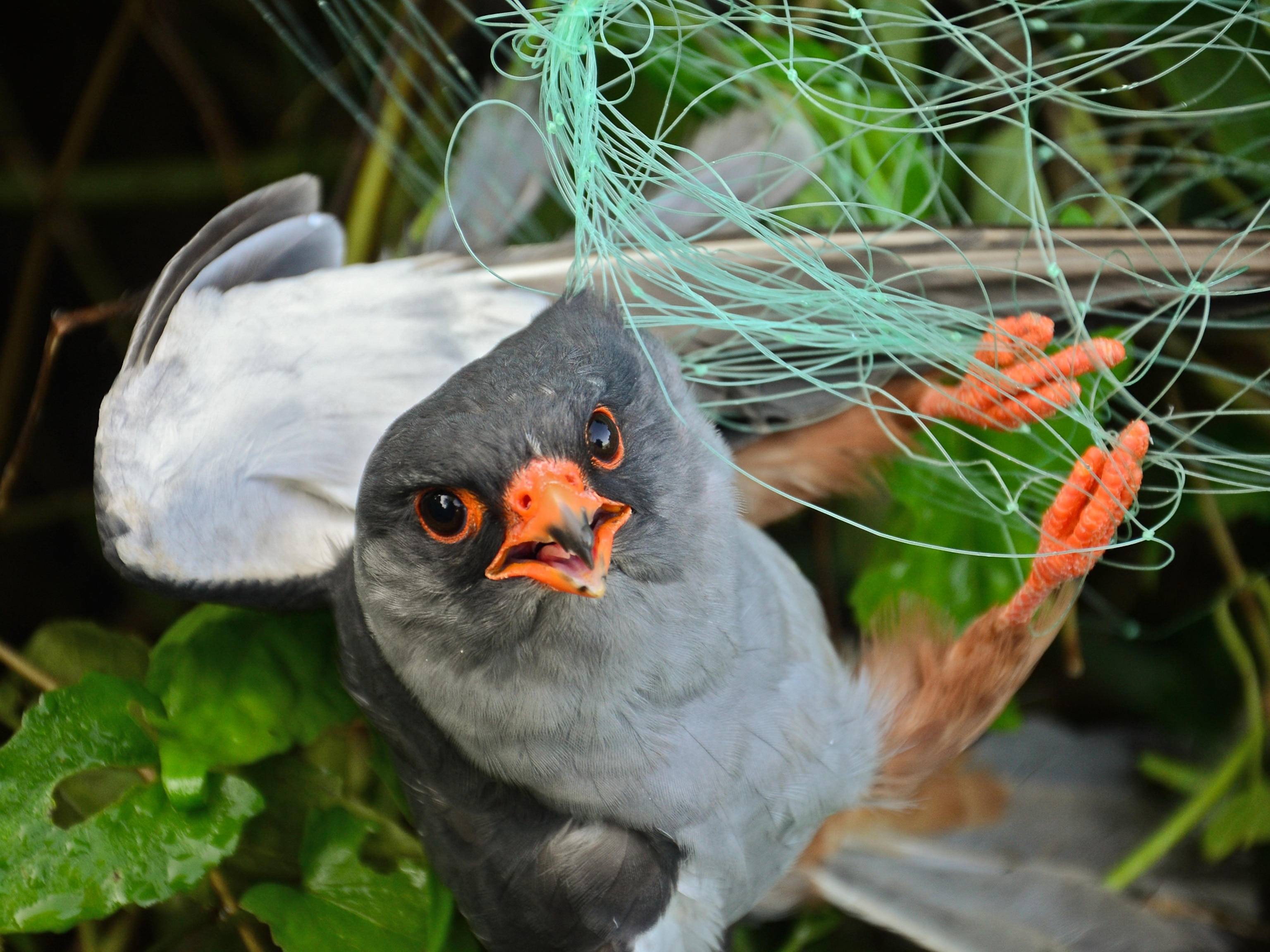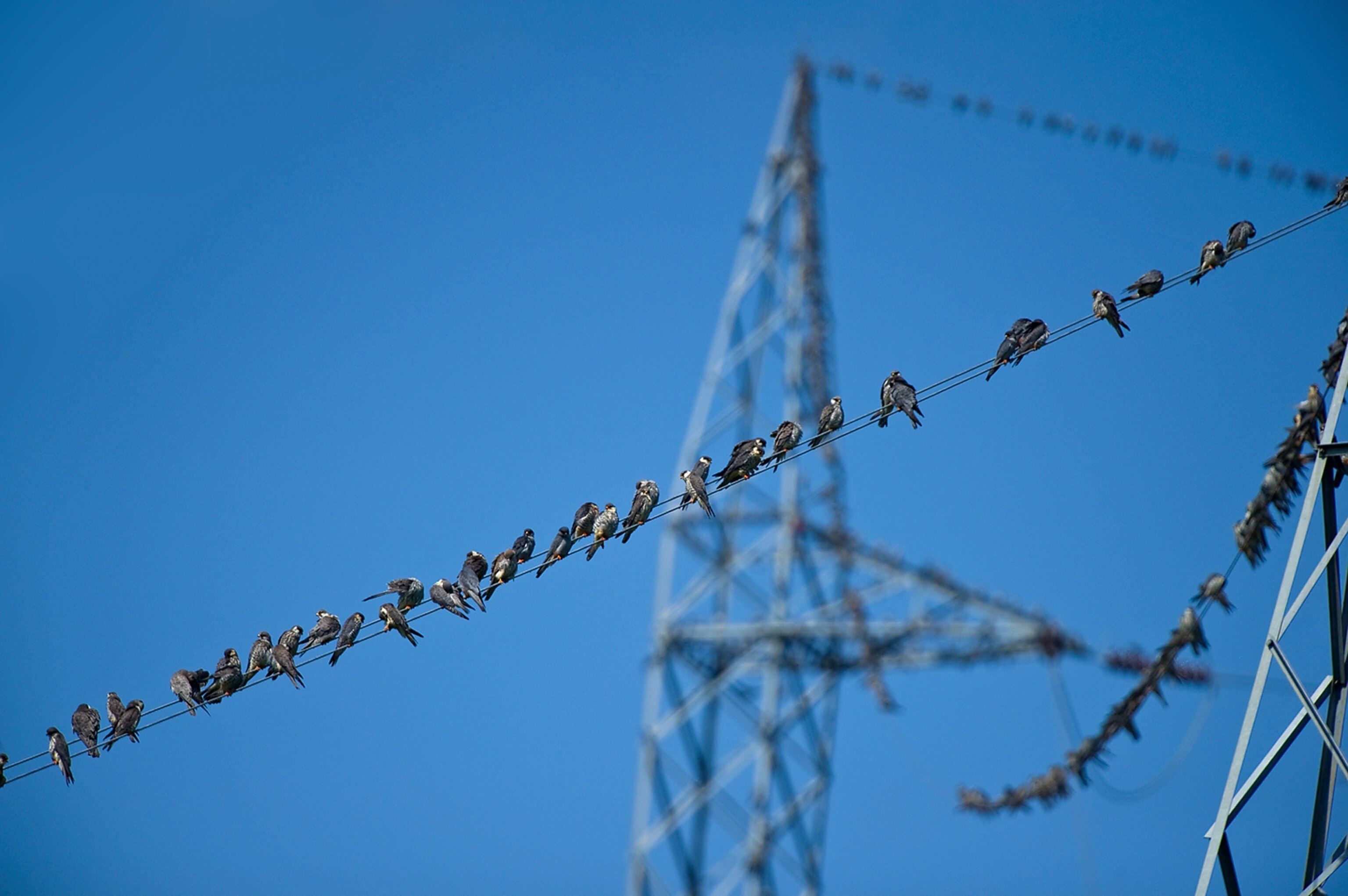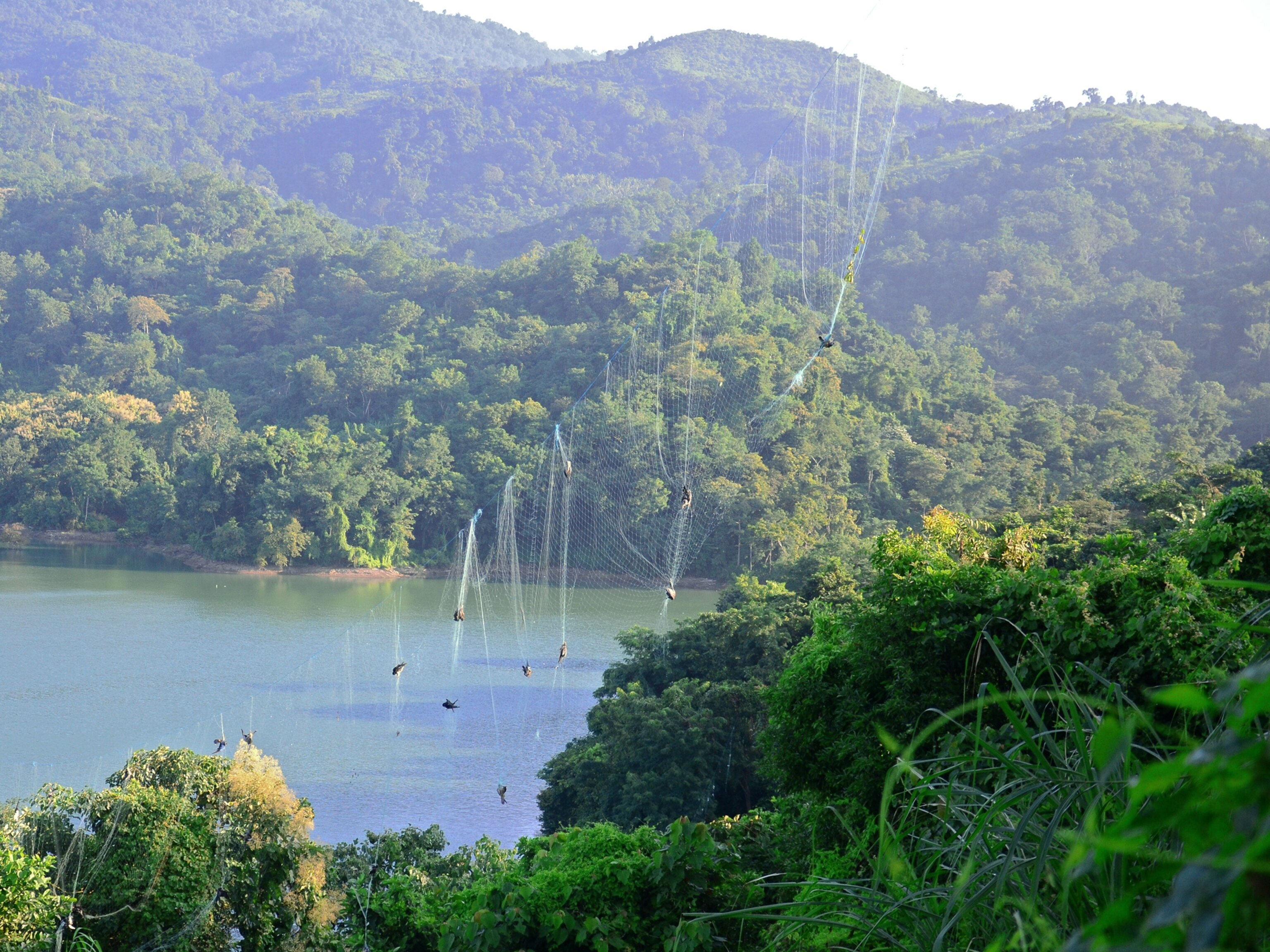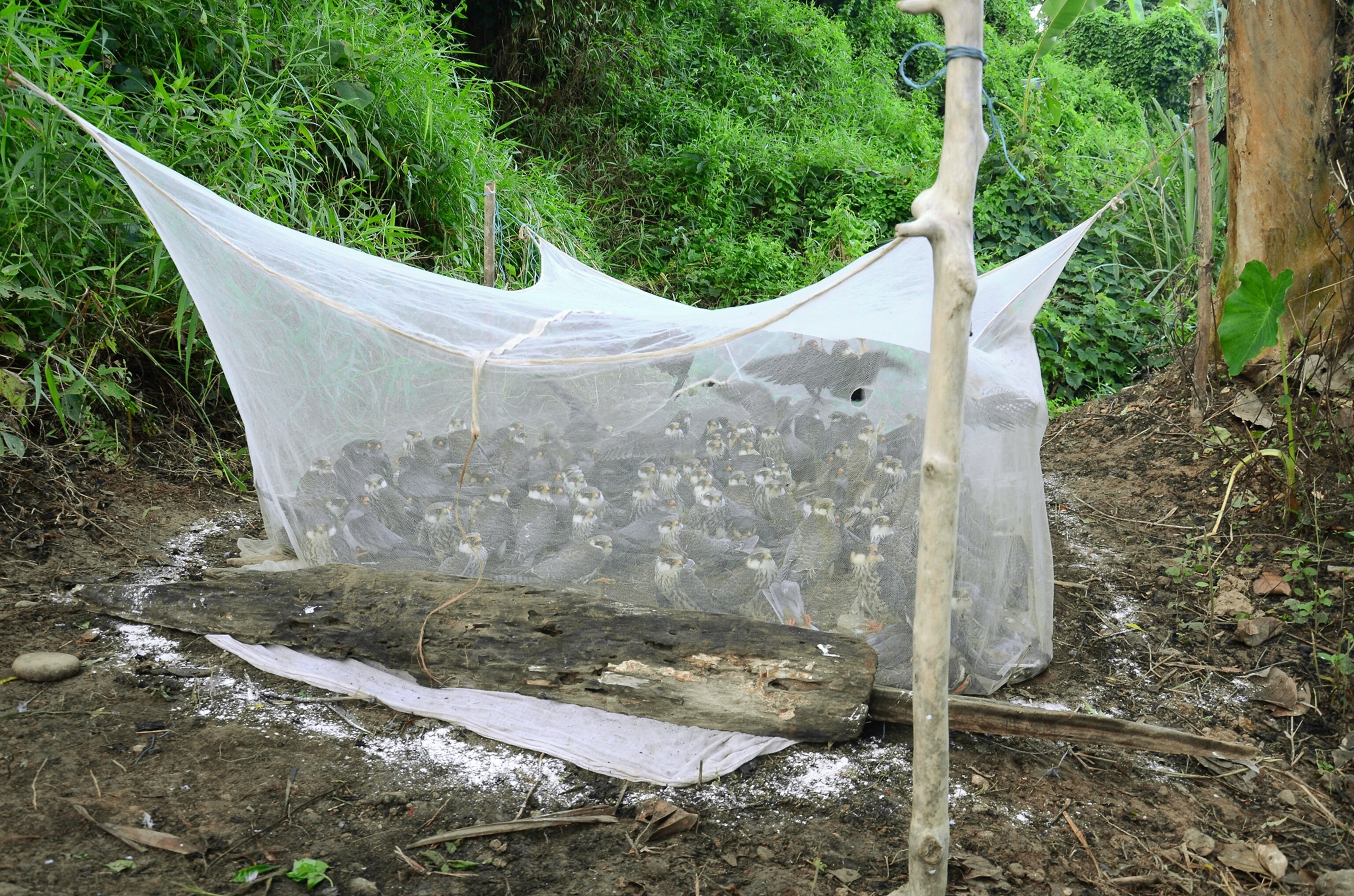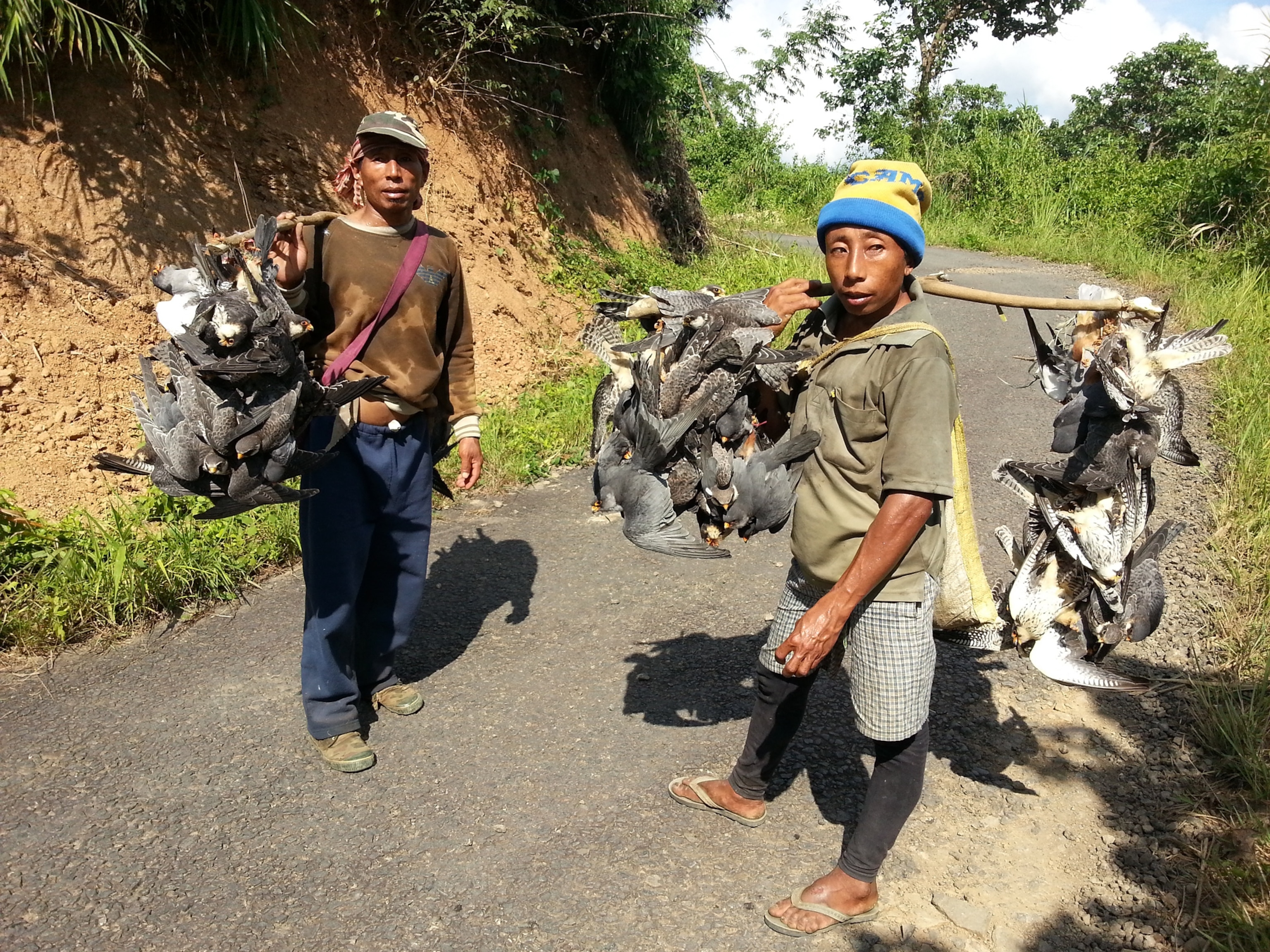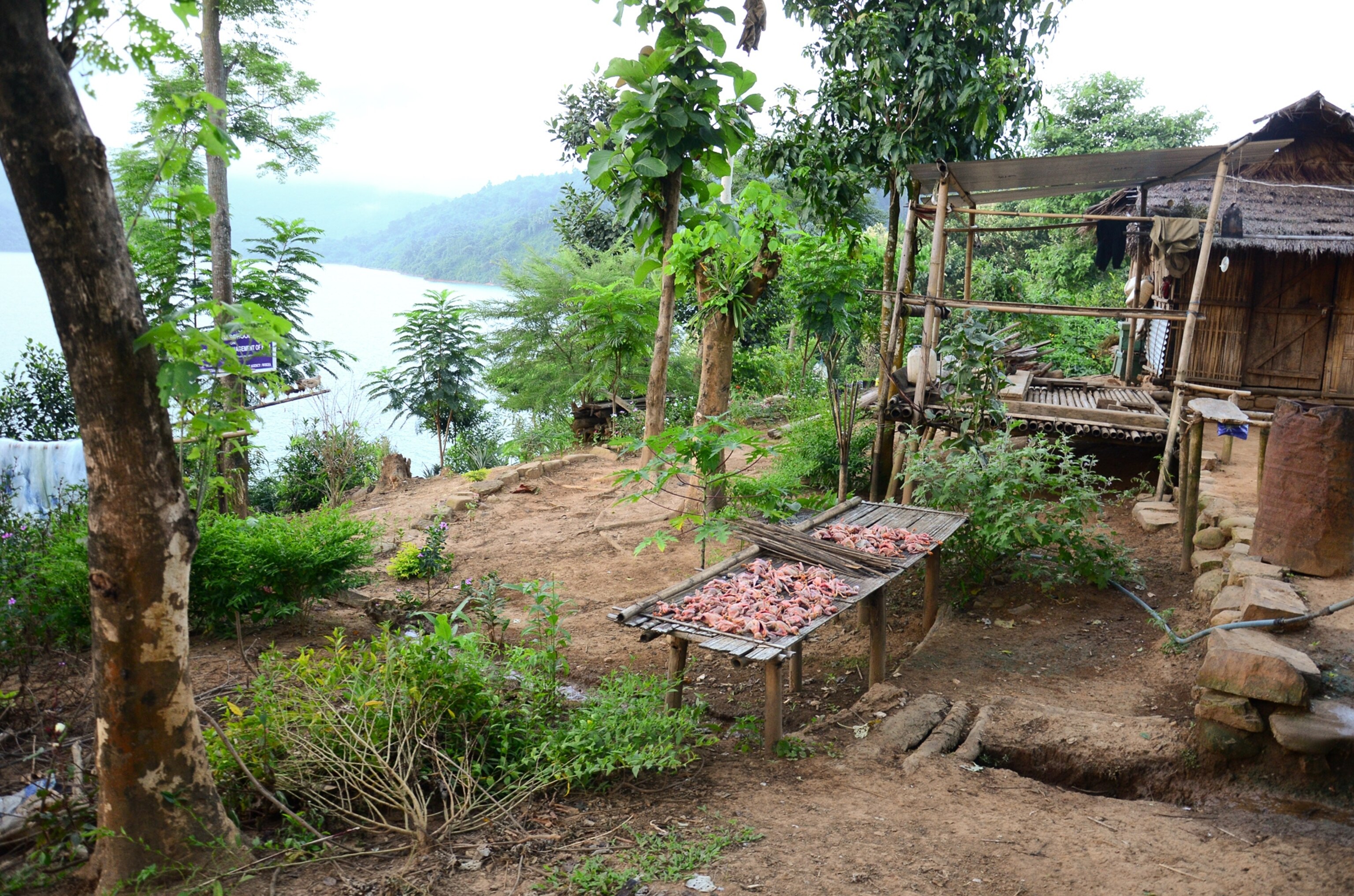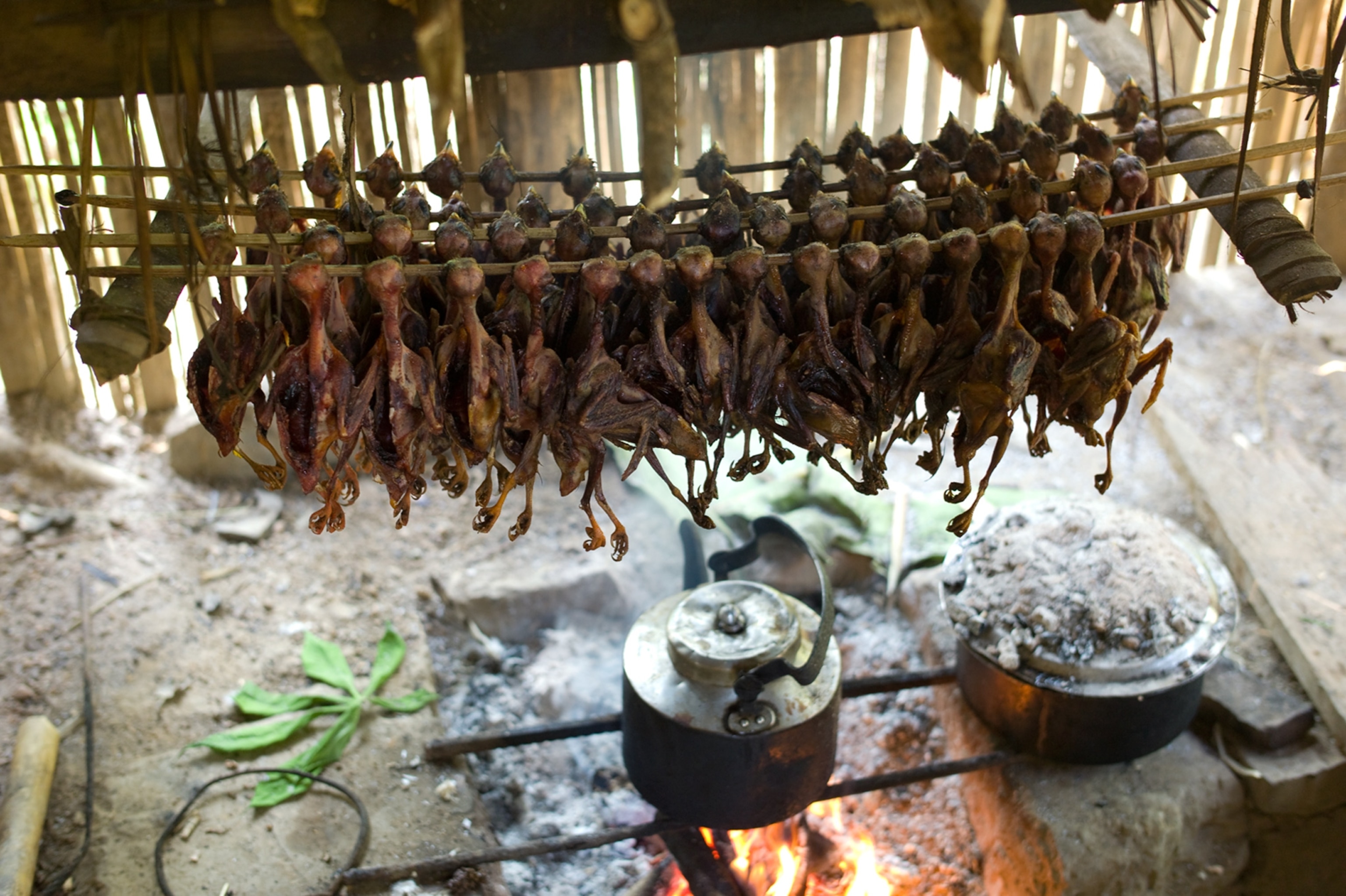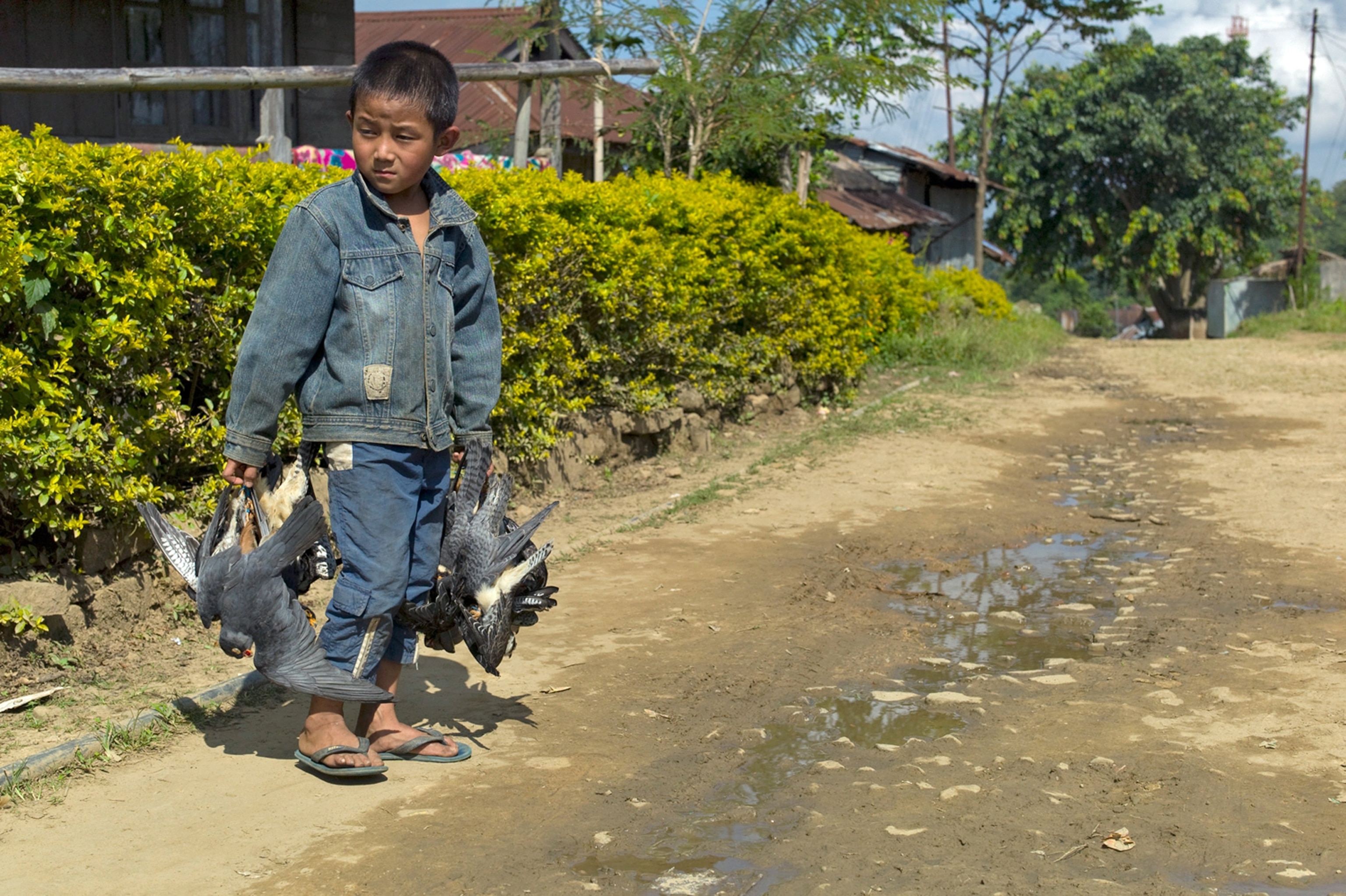In northeastern India, an Amur falcon (Falco amurensis) struggles in a net in a picture taken October 2012. The bird of prey is just one of an estimated 120,000 to 140,000 Amur falcons killed at the hands of hunters during an annual two-week hunt every fall.
Trapped in nets, some falcons are eaten fresh, some are smoked so they can be sold later, and authorities presume the rest are sent by the thousands to unidentified markets.
The slaughter takes place in a mountainous part of India called Nagaland where many locals still rely on bush meat to round out their diet. The birds arrive each year during their migration to South Africa, where the survivors spend their winter. Flocks are massive, comprised of tens of thousands of falcons. Conservation India—the organization that discovered the massacre and which has since begun a campaign to stop the hunts—estimates that this particular migration is the largest congregation of Amur falcons anywhere in the world.
Government authorities have sworn to put an end to the massive hunt and are already strategizing for the 2013 migration.
(Related: "Migrating Amur Falcons Massacred in India: We Need A Global Solution.")
—Shannon Fischer
